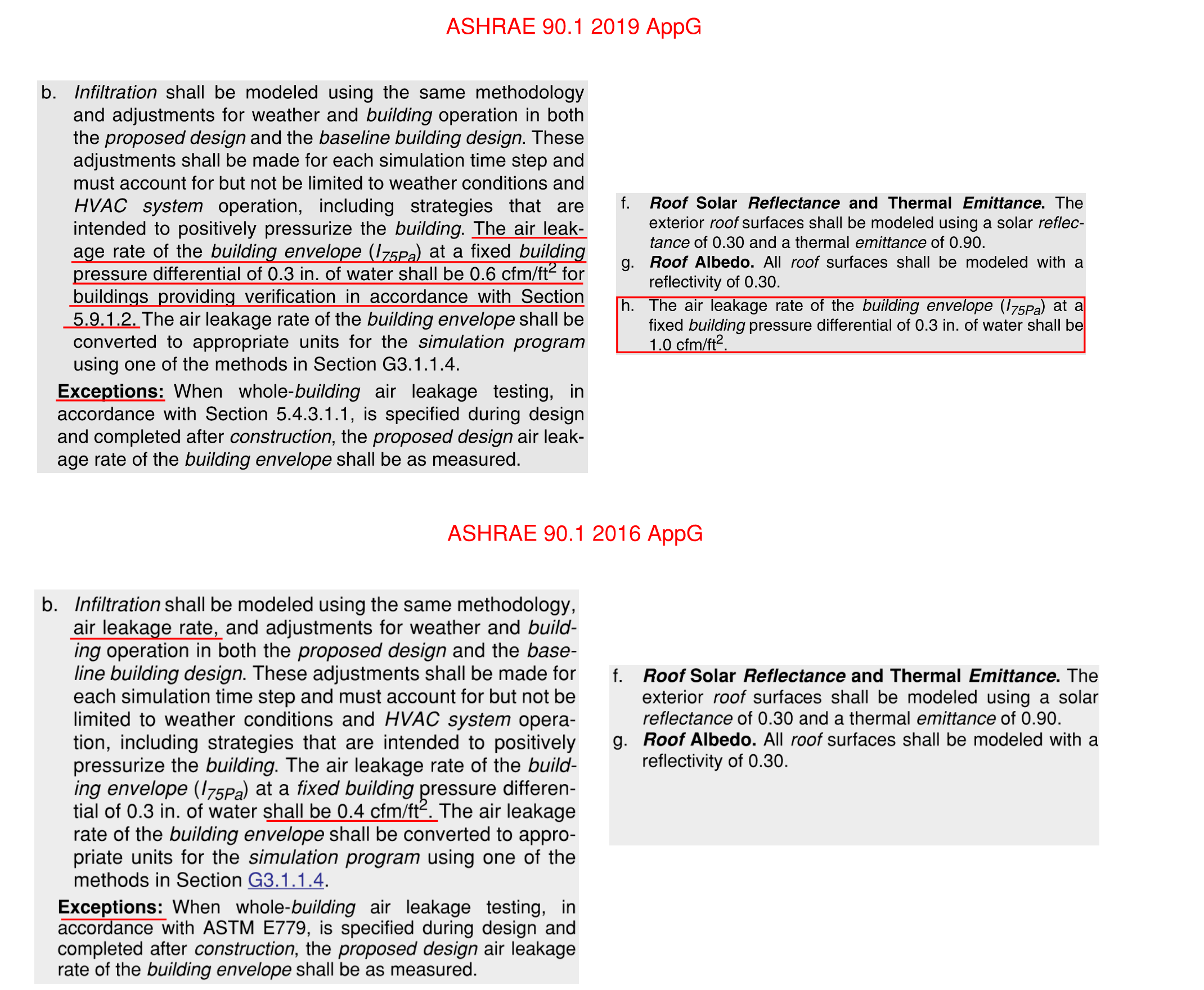LEED Energy Modeling Tip: v4.1 (ASHRAE 90.1 2016 AppG) vs v5 (ASHRAE 90.1 2019 AppG)
LEED v5 is here so let's talk about ASHRAE 90.1 2019 AppG energy modeling.
What's one of the main differences between v4.1 (ASHRAE 90.1 2016 AppG) and v5 (ASHRAE 90.1 2019 AppG) energy modeling?
It's infiltration!
Prior to ASHRAE 90.1 2019, 90.1 didn't allow credit in proposed vs baseline, meaning proposed and baseline were modeled with the same air leakage rate and schedule. But Since 90.1 2019, projects are allowed to take credit in infiltration by default. Without testing, you can model proposed at 0.6 CFM/sqft of building envelope enclosure area @75 pa vs baseline at 1.0 CFM/sqft. If the project has test done, you can model even lower numbers in proposed.
ASHRAE 90.1 2016 AppG vs 2019 AppG
This is a big deal! Credit in infiltration can lead to significantly more savings. My own experience is that it can yield at least 5% more savings against the baseline. So, make sure you claim it! And a friendly reminder: those air leakage numbers reflect pressurized testing condition as defined in ASTM, meaning they do not reflect normal building operational conditions. You should convert those numbers before inputting them to your model.
What's interesting is that ASHRAE 90.1 2019 mandatorily requires the leakage rate "shall not exceed 0.40 CFM/sqft" in section 5.4. In one of the exceptions, it does allow the rate to not exceed 0.6 CFM/sqft and a diagnostic evaluation should be performed.
So basically, the 2019 AppG took the highest allowed air leakage test threshold and applied it to the proposed default infiltration ruleset.
ASHRAE 90.1 2019 Mandatory Air Leakage Requirement
Air Leakage Test Exceptions
If you enjoyed this post, follow us for more!
With extensive experience in energy modeling for green building certifications, we help projects achieve their performance goals while meeting rigorous standards.



